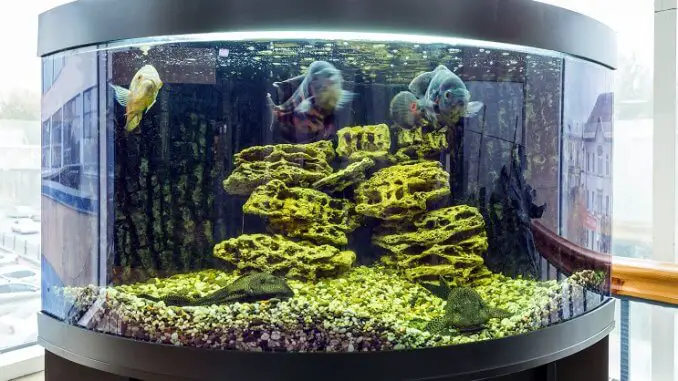
Aquariums are not only a wonderful hobby but can become a great decoration for any interior. They come in a variety of shapes and sizes, making them a perfect piece for the display. Combine that with an endless diversity of colorful fish and you’ve got yourself a winning combination.
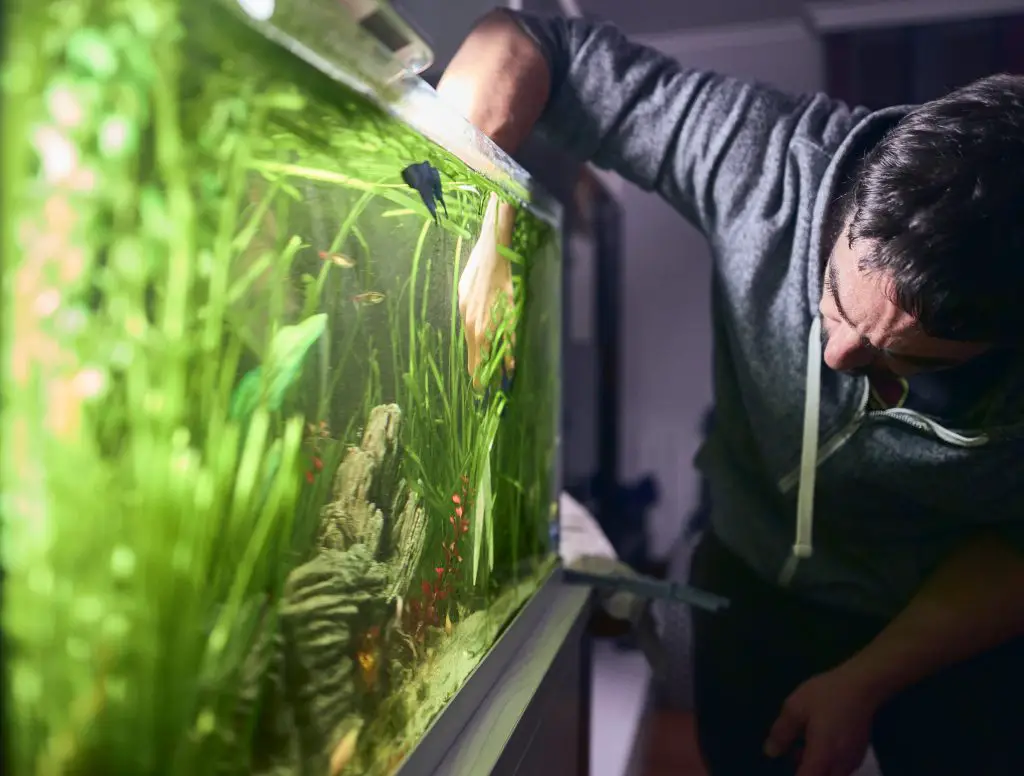
Unlike ordinary decorations though, the aquarium is a dynamic and living system. It requires regular maintenance and if overlooked can lead to some unfavorable conditions, including things like fish disease, algae growth, plant rot, and cloudy water.
Cloudy water is probably among the most common problems aquarists have to deal with. This is why in this article we will look at the possible causes, solutions, and preventive methods for addressing cloudy water.
Does this sound like a familiar problem? Then keep on reading and learn how to keep your tank beautiful, clean, and healthy!
Cloudy Water
Cloudy water in the tank is a commonly known issue for many fishkeepers. The unpleasant look of a new aquarium with cloudy water making it difficult to see through it is known to anyone who ever set up a tank. In the case of the new tank, cloudiness is short-lasting and usually goes away in a couple of minutes.
It does not make it any easier when cloudy water develops in an old tank or without any obvious causes. The quality of the water, including cloudiness, is a good indicator of the overall wellbeing of your tank. Hence the cloudy water can be a symptom of many minor problems in your tank.
Let us take a look at some of the possible causes.
Causes
One of the more frequent causes of cloudy water in the tank is the natural suspension of the substrate. This can happen when you are filling the tank up with water, which displaces some of the substrates and causes lighter grains to be moved around and lifted up.
If that is the case, there is no reason to worry. Simply let your filters do their job and soon most of the substrate should settle, making the water clear again. This happens more in tanks that use sand or other light material as a substrate.
However, if the cloudiness does not go away even after all the substrate seems to have settled, there could be an entirely different issue. This brings us to the second potential cause – waste in the water.
Water is great at dissolving things and helps create a habitable environment in your tank. This also means that any natural or artificial waste could be easily dissolved or retained in the aquarium.
Usually, this is where filters come in, but the cloudiness of the water indicates that the filters cannot handle the amount of waste produced or they are not working properly. If you suspect that this might be the case, be sure to clean your filter and see if it clogged up. In case the problem persists, check that your filter is suitable to use with the tank of water volume.
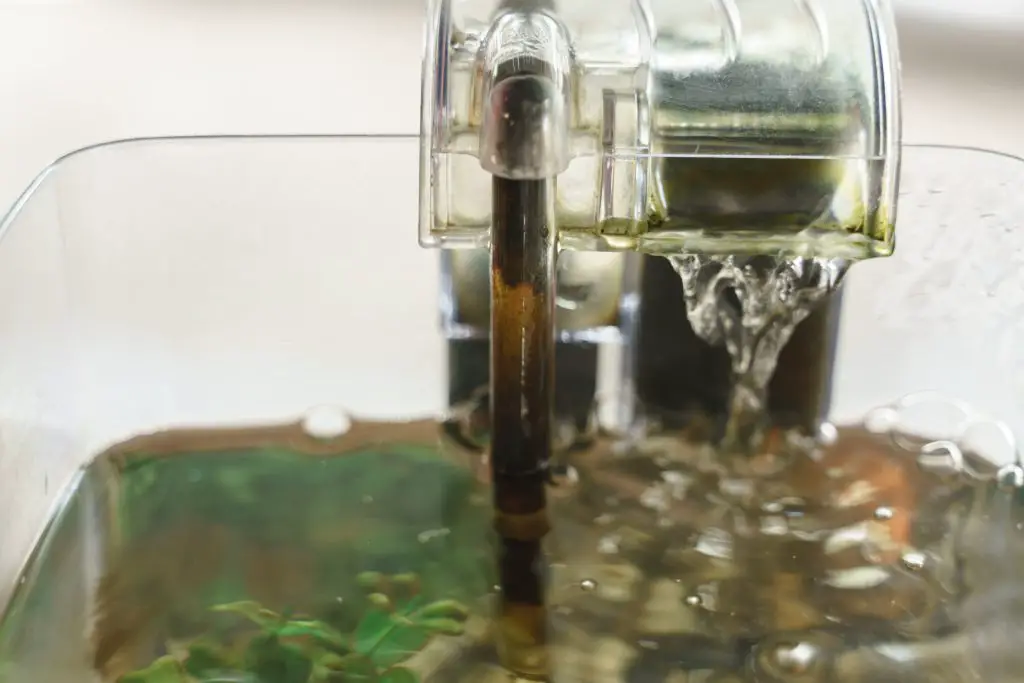
- Fish tank water flow running pump with green moss and stain grunge
Using incompatible filters is a waste of money and means that your tank is not being properly circulated. Always make sure that the equipment you are using, like filters or heaters, is a suitable match.
But what if everything is fine with my filter? Then the cause for cloudy water might lie somewhere else, like the environment itself.
The waste in your tank comes from multiple sources, but if natural or food waste usually is not a problem for the filter, things like rotting live plants might be. The rotting plants, in turn, cause the growth of algae and small bacteria. Both of which contribute to the cloudy water.
Always make sure that you trim any live plants regularly and do not let them pollute the nearby water. If you find yourself struggling with taking care of plants, consider more sturdy species that require less attention.
Another issue that may result in cloudy water is an incorrect fish diet. The leftover food that causes cloudiness means that the portion size may be too large or the food itself is inappropriate. Remember that a good portion should make up about 5-10% of the fish’s body and should be eaten in 10-15 minutes.
The cloudy water may also occur in an overpopulated tank. Any aquarium is designed to host up to a specific number of pets, but when that number is exceeded, the system as a whole starts to perform poorly. This is bad news not only for the appearance of your tank but for the health of your fish as well.
Pay attention to the instructions from the manufacturer regarding the recommended number of fish in the tank.
In some other cases you could find that in addition to cloudy water, the surface level of your tank is covered by a thin layer of bacterial film. Once again, this can be caused by purely mechanical processes or serve as an indication of something more complicated.
If you find that this is happening at the same time with the cloudy water, then potential causes narrow down to three previously discussed suspects – insufficient mixing, overly fatty foods, or algae outgrowths.
The solution for inadequate mixing is straightforward, the one for a diet may not be. Try to use quality foods combined with enough filtering power, preferably granules where possible. They tend to be a reasonable choice both for your wallet and animals.
Finally, the cloudiness in the tank may be simply caused by insufficient cleaning. To keep your aquarium healthy consider making a regular cleanup a habit. Make sure that you partially renew the water in your tank, carefully clean the lining of glass walls and the equipment.
There is also one slightly more ingenious solution that we haven’t covered yet. It involves using the help of animals, namely snails, to take care of cleaning in your tank. You will be killing two birds with one stone – keeping aquariums diverse and clean with snails well-fed.
How to Prevent Cloudy Water
When the cause of cloudy water has been identified, we can start to act. Let’s quickly go through some of the things we’ve mentioned previously.
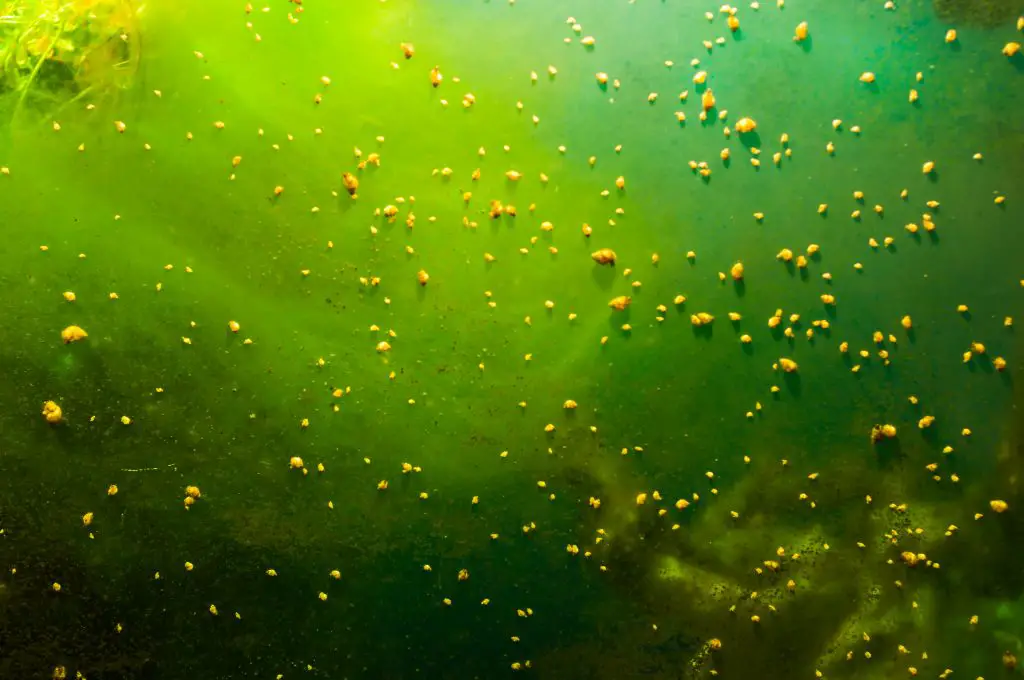
- dirty overgrown seaweed and seashell glass in the aquarium
The first time a cloudiness incident can come up in your aquarium is during the first weeks after the initial setup. The water might seem slightly turbid right after you set up a new tank. This is natural and should go away soon, just give it some time.
The feeding might also present a problem for the water quality in your tank. Make sure that you know what and how often your fish should be fed. Any leftover food will quickly start dissolving, reducing the quality of the water in the process.
If you clean the aquarium and the equipment, get rid of any waste but the cloudiness doesn’t seem to go anywhere – it’s likely that the issue is in the biological balance.
One of the best preventive measures, in that case, is water renewal. Aim to change about a quarter of water in the tank for a couple of days and see if that helps. Also, try feeding your fish slightly smaller portions to avoid putting an additional strain on the filters.
The same goes if the cloudiness is caused by excessive algae growth. In that case, make sure that the filtering agent in your filters is clean and get rid of any algae that might have slipped through.
Also remember that your tank shouldn’t be directly exposed to sunlight as this is what usually causes algae blooms. If the aquarium is placed away from direct sunlight, you might need to look into changing your aquarium lamp or getting a UV sterilizer.
Treatment
There are a variety of different chemicals available to treat cloudy water in the tank. However, before using any of them make sure to thoroughly read and follow the instructions attached. You also need to make sure that all of the products are suitable to use with the type of fish in your tank.
The aquarium chemicals are a powerful tool that can help you alleviate many of the common issues, including water cloudiness. Some of them can unclog filters and prevent future clogging by transforming smaller organic waste into larger flakes.
When dealing with cloudiness in the tank, the go-to choice of many fishkeepers are granules that are added directly to the water. This actin as little as 3 hours and will make the water in your tank look crystal clean in about 12 hours.
The majority of these treatments act as biological regulators and help address cloudiness on many levels. Some normalize the nutrient cycling in the environment, while others directly affect the algae growth by limiting their growth.
To deal with cloudiness caused by the disrupted cycling in the tank many hobbyists use live beneficial bacteria cultures, which could also be used to clean the environment before starting up the aquarium.
A Few Takeaway Points
Now that you understand how cloudiness in your aquarium can form and how to handle it, let’s bring it all together in a few points.
Remember that if cloudy water in the tank forms as a response to broken biological balance, the best way to handle it is good consistent cleaning. Make sure to siphon the substrate, renew the water, provide sufficient aeration, and test water quality.
All these measures will lower the amount of organic material and tiny microorganisms that can cause cloudiness. If good aquarium maintenance does not seem to work, use the chemicals we have described above.
Also, ensure that the aquarium environment is safe and does not have anything that could potentially cause water to become turbid. This includes using safe, quality, and prepared substrate. In case you try to cycle a new tank without first cleaning the substrate, you might end up with cloudy water.
It may also be worth checking that the decorations you are using are indeed suitable to use in aquariums. Although it may sound pretty straightforward, many people still use unsafe decorations in their aquariums on a regular basis.
Just like the substrate, make sure to use only quality foods and avoid overfeeding. It can be both devastating for your fish and their surroundings. The unfinished foods settle on the bottom of the tank and continue to decrease the overall water quality.
It is recommended that you give your fish the amount of food they can finish eating in about 15 minutes. If there is anything left after that time, you should probably consider decreasing their portion size.
The algae are a well-known cause of water cloudiness and all fishkeepers should be wary of it. Excessive algae growth can be caused by too much lighting or overabundance of nutrients. Follow a good cleaning routine and maintain the recommended daylight regime.
You should also always consider the amount of fish or other animals your tank can host. The poor handling of waste by the filters or crowded tanks can often cause the water in your tank to become murky. Check the recommended water volumes for the species of your choice to avoid dealing with this in the future.
Summary
The cloudiness in the tank is a common issue that many aquarists have to deal with at some point during their hobby. In order to successfully tackle the problem you first need to identify the cause. The turbidity in the tank can arise as a response to many factors – biological imbalance, poor water quality, or incorrect care.
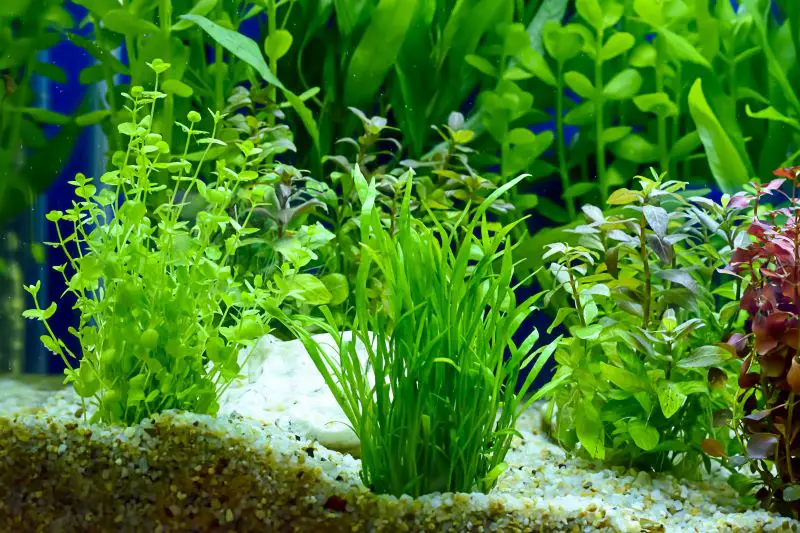
Once you understand what is behind this, dealing with the matter is relatively straightforward. The most important thing is to combat the issue in a timely manner. It may seem challenging, but in reality, this shouldn’t be a problem even for a beginner.
To prevent cloudiness from ever coming back just make sure to regularly clean the tank, watch the size of portions, and that equipment is properly maintained.
Have you ever dealt with cloudy water in your tank? Let us know in the comments section below…

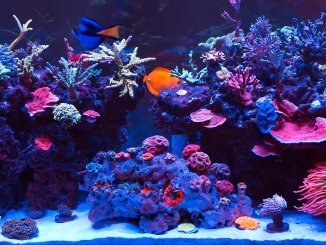

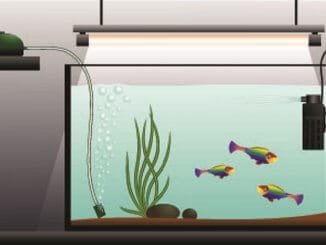
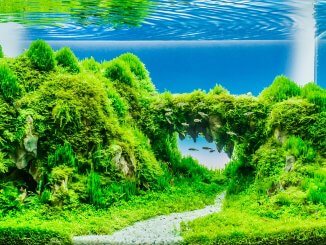
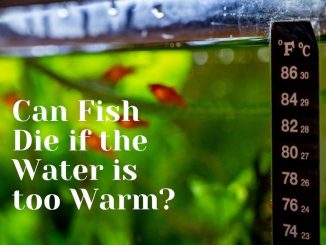
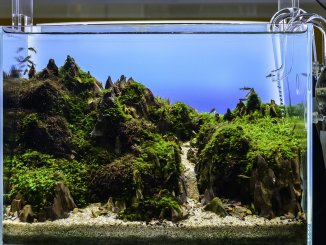

Be the first to comment